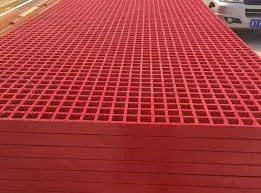
-
 Afrikaans
Afrikaans -
 Albanian
Albanian -
 Amharic
Amharic -
 Arabic
Arabic -
 Armenian
Armenian -
 Azerbaijani
Azerbaijani -
 Basque
Basque -
 Belarusian
Belarusian -
 Bengali
Bengali -
 Bosnian
Bosnian -
 Bulgarian
Bulgarian -
 Catalan
Catalan -
 Cebuano
Cebuano -
 China
China -
 China (Taiwan)
China (Taiwan) -
 Corsican
Corsican -
 Croatian
Croatian -
 Czech
Czech -
 Danish
Danish -
 Dutch
Dutch -
 English
English -
 Esperanto
Esperanto -
 Estonian
Estonian -
 Finnish
Finnish -
 French
French -
 Frisian
Frisian -
 Galician
Galician -
 Georgian
Georgian -
 German
German -
 Greek
Greek -
 Gujarati
Gujarati -
 Haitian Creole
Haitian Creole -
 hausa
hausa -
 hawaiian
hawaiian -
 Hebrew
Hebrew -
 Hindi
Hindi -
 Miao
Miao -
 Hungarian
Hungarian -
 Icelandic
Icelandic -
 igbo
igbo -
 Indonesian
Indonesian -
 irish
irish -
 Italian
Italian -
 Japanese
Japanese -
 Javanese
Javanese -
 Kannada
Kannada -
 kazakh
kazakh -
 Khmer
Khmer -
 Rwandese
Rwandese -
 Korean
Korean -
 Kurdish
Kurdish -
 Kyrgyz
Kyrgyz -
 Lao
Lao -
 Latin
Latin -
 Latvian
Latvian -
 Lithuanian
Lithuanian -
 Luxembourgish
Luxembourgish -
 Macedonian
Macedonian -
 Malgashi
Malgashi -
 Malay
Malay -
 Malayalam
Malayalam -
 Maltese
Maltese -
 Maori
Maori -
 Marathi
Marathi -
 Mongolian
Mongolian -
 Myanmar
Myanmar -
 Nepali
Nepali -
 Norwegian
Norwegian -
 Norwegian
Norwegian -
 Occitan
Occitan -
 Pashto
Pashto -
 Persian
Persian -
 Polish
Polish -
 Portuguese
Portuguese -
 Punjabi
Punjabi -
 Romanian
Romanian -
 Russian
Russian -
 Samoan
Samoan -
 Scottish Gaelic
Scottish Gaelic -
 Serbian
Serbian -
 Sesotho
Sesotho -
 Shona
Shona -
 Sindhi
Sindhi -
 Sinhala
Sinhala -
 Slovak
Slovak -
 Slovenian
Slovenian -
 Somali
Somali -
 Spanish
Spanish -
 Sundanese
Sundanese -
 Swahili
Swahili -
 Swedish
Swedish -
 Tagalog
Tagalog -
 Tajik
Tajik -
 Tamil
Tamil -
 Tatar
Tatar -
 Telugu
Telugu -
 Thai
Thai -
 Turkish
Turkish -
 Turkmen
Turkmen -
 Ukrainian
Ukrainian -
 Urdu
Urdu -
 Uighur
Uighur -
 Uzbek
Uzbek -
 Vietnamese
Vietnamese -
 Welsh
Welsh -
 Bantu
Bantu -
 Yiddish
Yiddish -
 Yoruba
Yoruba -
 Zulu
Zulu
frp manhole cover
The Importance and Advantages of FRP Manhole Covers
Manhole covers are a critical component of urban infrastructure, providing access to underground utilities such as sewer systems, water lines, and electrical conduits. Traditionally made from cast iron, these covers come with a range of challenges, including weight, susceptibility to rust, and theft due to their scrap metal value. However, the introduction of Fiber Reinforced Polymer (FRP) manhole covers has revolutionized the industry, offering numerous advantages that enhance the durability, safety, and efficiency of urban environments.
What is FRP?
Fiber Reinforced Polymer, or FRP, is a composite material made from a polymer matrix reinforced with fibers, typically glass or carbon. This innovative material combines the lightweight properties of plastics with the strength of traditional materials like steel or cast iron. The result is a covering that not only meets the structural requirements necessary for urban applications but is also resistant to corrosion and environmental damage.
Key Advantages of FRP Manhole Covers
1. Lightweight Design One of the most significant benefits of FRP manhole covers is their lightweight nature. Weighing significantly less than cast iron, they are easier to handle and install, thereby reducing labor costs and improving safety during maintenance operations. The reduced weight also lessens the strain on lifting equipment, thereby enhancing operational efficiency.
The Importance and Advantages of FRP Manhole Covers
3. Theft Prevention The rising incidence of manhole cover theft has posed a significant challenge to city planners and utility companies. Metal covers often attract thieves looking to sell scrap metal. Since FRP does not have scrap value, it provides a viable solution to this issue, reducing replacement costs and enhancing public safety.
frp manhole cover

4. Improved Safety FRP manhole covers are designed with non-slip surfaces, providing enhanced traction for pedestrians and vehicles alike. Furthermore, their structural design can include features such as load resistance and impact resilience, minimizing the risk of accidents. This is particularly important in high-traffic areas where safety is a paramount concern.
5. Customizability FRP can be easily molded into various shapes and sizes, allowing for tailored solutions that meet specific project requirements. From color options that enhance visibility to custom designs that incorporate city logos or safety markings, the versatility of FRP covers can improve aesthetic appeal while serving functional purposes.
6. Environmental Benefits As urban areas increasingly focus on sustainability, FRP manhole covers offer an eco-friendly alternative. Many manufacturers utilize recycled materials in their production processes, and FRP itself can often be recycled at the end of its lifespan. By choosing FRP, municipalities can demonstrate their commitment to sustainable practices and resource conservation.
Applications in Urban Infrastructure
FRP manhole covers are suitable for a range of applications beyond standard utility access. They can be utilized in parks, pedestrian walkways, and even as access points for public transport facilities. Their versatility extends to industrial settings, where they can be installed in locations sensitive to corrosion, such as chemical plants or coastal areas.
Conclusion
The transition to FRP manhole covers represents a significant advancement in urban infrastructure management. By addressing the limitations inherent in traditional materials, FRP covers offer a sustainable, safe, and efficient solution to meet the demands of modern cities. Their lightweight nature, corrosion resistance, and potential for customization make them an invaluable asset in enhancing urban safety and operational efficiency. In an era where innovation and sustainability are paramount, FRP manhole covers stand out as a forward-thinking choice, paving the way for safer and more resilient urban environments. With the continued development and adoption of such materials, the future of infrastructure looks promising.
Latest news
-
Exploring the Benefits of Top Hammer Drifter Rods for Enhanced Drilling PerformanceNewsJun.10,2025
-
High-Precision Fiberglass Winding Machine for GRP/FRP Pipe Production – Reliable & Efficient SolutionsNewsJun.10,2025
-
FRP Pipes & Fittings for Shipbuilding - Corrosion-Resistant & LightweightNewsJun.09,2025
-
Premium FRP Flooring Solutions Durable & Slip-ResistantNewsJun.09,2025
-
Premium Fiberglass Rectangular Tanks Durable & Lightweight SolutionNewsJun.09,2025
-
Tapered Drill String Design Guide Durable Performance & UsesNewsJun.09,2025









